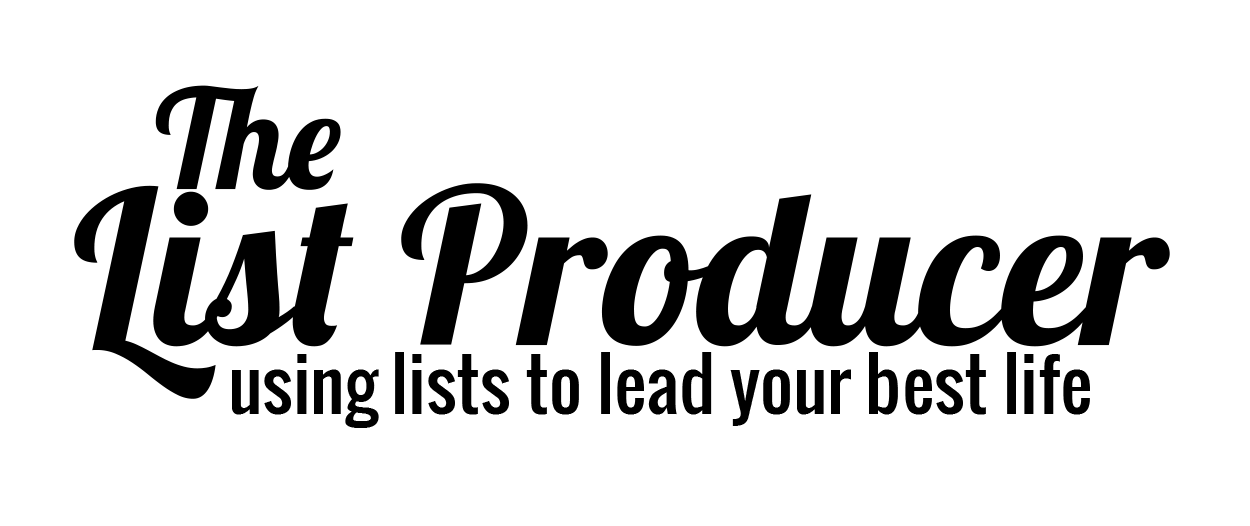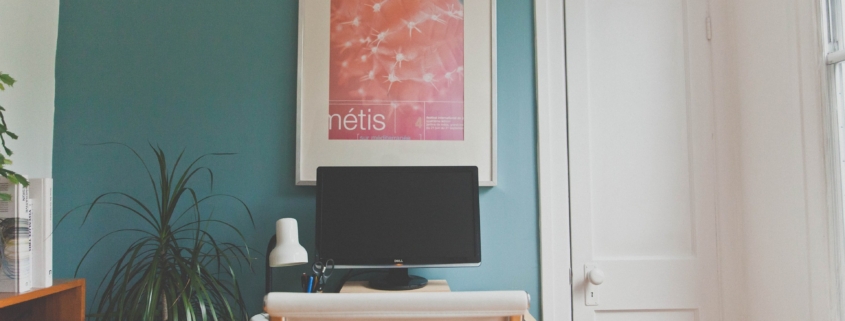Tools to Be More Productive Working Remotely
BONUS FREEBIE: Want even more ways to stay organized, productive and less stressed? Click here to get access to my List-Making Starter Kit. It will boost your efficiency and get you back to doing more of the things you love.
Since I started working for myself as a media strategist, author and speaker, a few years ago, I’ve become an expert at working from home. I really love it actually.
But I know all about how hard it can be to adjust to remote work when you’re used to an office environment and being around people all day long.
Many more employees are working remotely now because of coronavirus (COVID-19) — and if you’re one of them, you might have run into new challenges with keeping up your motivation and productivity.
There’s lots of ways to adapt to this situation. I’m a big fan of making lists of what you need to do – it’s a great way to break down your tasks and stay on top of things. I shared some of my best tips in this media interview with Fox News for their article, “Working from home during coronavirus outbreak? Tips on how to stay productive.”
Now I’ve made a list of all the things you’ll need to be more productive and less stressed when you’re working remotely.
From exercise apps to video chatting platforms, here’s all the best tools for optimizing your work-from-home experience:
SETTING UP YOUR REMOTE OFFICE
Noise-Canceling Software: Krisp is an app that allows you to mute background noise during calls. It’s perfect for working from home, since you don’t have to worry about the sounds of your kids or pets distracting you, your co-workers, or your clients. Plus, they just introduced some new deals due to increased demand from coronavirus. They have a new free tier, so you can now get up to 120 minutes of use. Teachers, government and hospital workers, and students can get Krisp for free, and they’ve slashed their regular rates down to just $5/day or $40/year.
Microphone: When you’re working from home, having a good microphone makes all the difference during calls and video conferences. I suggest the Stick Microphone for when you’re using your laptop, or the Lav Microphone when you’re using your phone.
Camera: Now that lots of meetings are happening virtually, it’s important for your coworkers and clients to be able to see you clearly. Having a good camera will make it easier to seem professional even when you’re working from home. A clip-on light like this one will help improve the lighting when you’re using your phone camera. If you want to buy a separate camera, the Logitechc930e is a great option.
Noise-Cancelling Headphones: Working remotely can make it hard to stay focused, especially if your family members are also home from work or school. A pair of noise cancelling headphones will let you focus on your tasks, making it easier for you to be more productive and less distracted. Sony and Bose both make great ones. I have the pair from Bose in rose gold and I love them. But those are both pretty pricey. This pair from Cowin is under $60 and has thousands of great reviews!
Computer Stands: Having a computer stand will keep you from straining your neck and back while you’re working. Plus, it will make your camera eye level when you’re doing video meetings (pro tips here) or recording videos. This is super important for creating connection and intimacy with the person you’re talking to. If you can’t be inthe same room it’s key. The Roost stand and Avantree stand are both ergonomically designed. This one from Amazon will cost about $20. It’s pretty similar to the one that I use everyday. You can also try a standing desk! This one is adjustable and easily converts to a sitting desk. Or you could use one like this that converts any surface into a standing desk.
KEEPING IN TOUCH
Marco Polo: This video-chat app is great for staying in contact with friends and family while sticking to social distancing and quarantine recommendations. It’s a mix between Snapchat and FaceTime – you film and send a video, and the recipient(s) can watch and respond at their convenience. I use it everyday with my friends, family and even clients. I tell all my media-training clients to download it to get used to speaking to a camera.
Voxer: Voxer is a walkie-talkie app. It makes it easy to stay in contact with coworkers when your team is working remotely. You can leave audio messages for each other and this makes it much easier to get it right when you can’t tell the tone of an email or have something complicated to explain. Right now they’re offering a free 14-day trial.
Zoom: This is an awesome video conferencing app that I use all day every day. It makes it easy to coordinate virtual meetings with lots of participants, and it has great sound and video quality. There are both free and paid versions depending on your needs. I use it to media train clients, have virtual tea meetups with potential clients as well as friends and family. Plus, I’ve run all my webinars and virtual trainings using it. Including this one that I did recently called, Virtual Meeting Pro, which will help you elevate your virtual presentation skills via video.
BombBomb: This tool lets you send video in emails using your email platform. It’s a great option for connecting with clients and coworkers because it gives a personal touch that text email can lack. Plus it’s a great way to follow up with people and show your personality.
Vidyard: Vidyard is a way to leave quick video messages for people in email or via text. They have video hosting and management, and they’ll also help you create interactive and personalized content. You can even see data about your viewers. I use it with my media-training clients all the time to give them quick feedback on their media pitches or videos they’ve produced.
KEEPING ON TRACK
Toggl: Toggl allows you to record your hours using their app or website. You can create reports for clients and keep track of different projects. It’s easy to use and it’s a great tool for making sure you can account for your working hours. It’s also ideal when trying to figure out how long it actually takes you to do a task. Knowing how long tasks will take will make you much more efficient throughout the day because you’ll know exactly how much you can fit in.
List making: Making lists is a great way to stay organized when you’re working remotely. As I wrote in my book, Listful Living, making lists of all the things you have to do will help you get more done while reducing your stress. Plus, having a roadmap in front of you each day will keep you on track and keep you accountable.
Accountability buddies: Make a plan with your friends or coworkers for what you each want to get done each day. Sharing your goals will help you (and them!) stay on track. Set up a quick call in the morning or once a week where you can share what you’re working on and what you might need help with. The same goes for teams. This can be a really powerful and free tool.
Scheduling your day: Even though you’re working from home, setting “office hours” for when you’re going to be working will help you create structure and get more done. If you tell yourself you’re going to be working from 9 a.m. to 4 p.m. with a lunch break, you’ll be able to focus more easily and set specific, timed goals for yourself. Plus, this will help you to set up boundaries more easily.
Caveday: If you think you’d benefit from even more structure, Caveday is a great option. It usually operates as an in-person deep work session in NYC and LA, but all “caves” are now happening remotely. They offer 3.5 hour group focus sessions led by a trained guide so you can all get into the zone together.
KEEPING GROUNDED
Calm app: This app offers lots of different ways to relax, from guided meditations to lullabies to sleep-inducing bedtime stories for grown-ups. It’s one of my favorite tools and I use it every single day. Also when I’m traveling I like to use it to zone out on the plane. Plus, they have audio episodes of The Joy of Painting with Bob Ross. Sometimes it’s nice to hear a friendly voice.
Lofi Hip Hop Radio on YouTube has great background music for working – 43k people are listening to it right now! It’s 12 hours of relaxing instrumental music with the right amount of energy to keep you relaxed but not sleepy.
Ambi Pro app: If ambient noise is best for helping you work, this app might be perfect for you. It creates randomly generated noise that you can adjust to your preferences.
Exercise apps: Yoga can help you relax and get some exercise at the same time, and an app like Down Dog is a great way to keep your workout interesting. Planet Fitness also has free living-room ready streaming workouts daily at 7 p.m. ET! I recently purchased the digital version of YogaWorks classes through MyYogaWorks.com so I can practice at home.
Day One Journal app: Keeping a journal can help you clear your mind and work through your emotions. This journaling app allows you to insert pictures, videos, drawings, and even audio recordings in addition to text.
I hope this list is helpful as you’re getting into the groove of working from home. If you’ve found tools that are especially helpful please share them with me in the comments below and I can add to this list. And if you’d like me to speak to your group or do a training about how to be productive when working at home drop me an email here.
BONUS FREEBIE: Want even more ways to stay organized, productive and less stressed? Click here to get access to my List-Making Starter Kit. It will boost your efficiency and get you back to doing more of the things you love.





Leave a Reply
Want to join the discussion?Feel free to contribute!